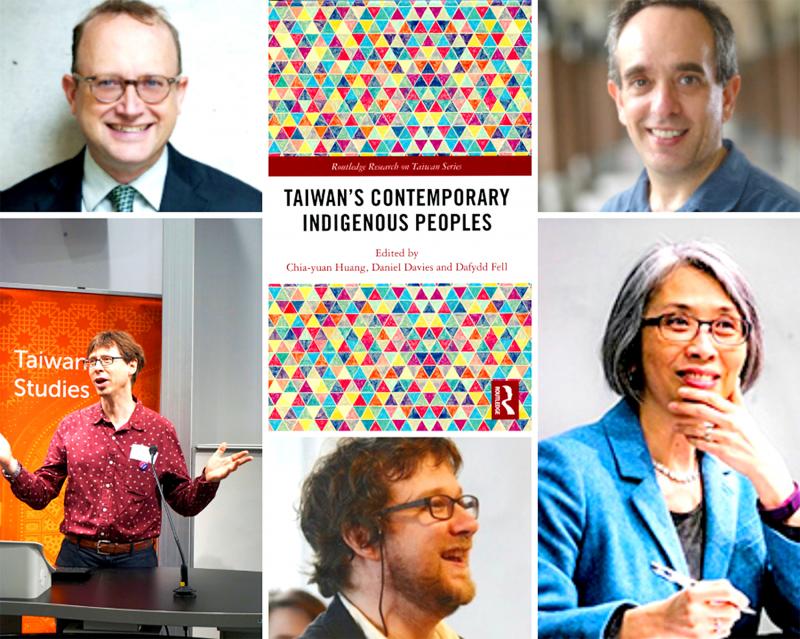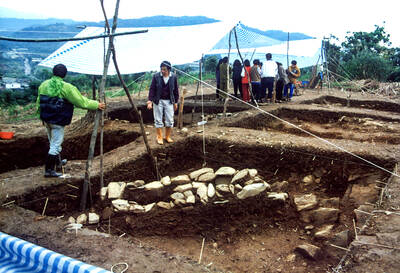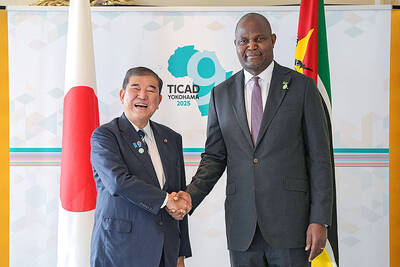This month saw the online launch of an English-language book that it is hoped will enhance Taiwan studies at universities in Europe and further afield, providing a wider audience with unique insight into a field of study that is attracting increasing attention.
Taiwan’s Contemporary Indigenous Peoples is the result of a lecture series at London’s Centre of Taiwan Studies, part of the University of London’s School of Oriental and African Studies. These talks on issues related to Taiwanese Aborigines formed the basis of the new publication, the whole project facilitated by a grant from Taipei’s Shung Ye Museum of Formosan Aborigines (順益台灣原住民博物館).
“Within Taiwanese universities there has been a rapid growth in the numbers of Indigenous teaching and research programs in the last decade,” says Dafydd Fell, director of the centre. “There have also been parallel trends in Indigenous language promotion in the media, such as Indigenous Television, and in schools. Since some of these Indigenous studies programs in Taiwan are also developing English language courses, we are hoping our book can be widely used in Taiwan.”

Photos courtesy of Dafydd Fell
Fell added that within the field of international Taiwan Studies there has been a similar growth in interest in Aboriginal topics, but much of this work tended to be dispersed across different disciplines. The book brings together studies on modern Taiwanese Indigenous topics.
Both trends form part of a growing global interest in Indigenous studies that Taiwan is just one part of, with the nation providing fascinating examples of a number of aspects of contemporary indigeneity. Part of a multi-ethnic society with diverse cultural characteristics, Taiwan’s Indigenous peoples have lived on the island for thousands of years. Their languages belong to the Austronesian family and they have close cultural ties to Oceania and the South Pacific.
The book has four section themes: historical perspectives, the arts, education and politics. Chapters are written not only by academics but also by writers from within the Taiwanese Indigenous rights movement.
The authors who spoke about their respective chapters in the book at its launch, described by Fell as “four giants of Taiwan studies,” highlight the diversity of its content.
Niki Alsford showed that as a result of land dispossession, lack of employment opportunities and the deterioration of traditional livelihoods, there has been a significant increase in Indigenous domestic migration into urban environments. This has made it important for Indigenous peoples to maintain a framework of traditions and values compatible with multiple community-based, pan-Indigenous and wider Taiwanese identities.
Scott Simon talked about how Indigenous peoples have adapted Christianity to their local cultural context rather than passively accepting external values, defining contemporary religious communities and institutions as hybrid creations not foreign impositions.
Kerim Friedman used the concept of chronotope to discuss shifting representations of Taiwan’s Indigenous peoples in documentary films, while Chang Bi-yu (張必瑜) discussed representations of Indigenous peoples in educational materials, focusing on the dominance of a “Han perspective” and the stigmatization and reduction of Indigenous peoples to limited social and physical spheres.
Fell says there has been growing interest in Taiwan’s Indigenous peoples among students at the Centre for Taiwan Studies.
“I think students are often curious about the way many of the trends we see in Indigenous society are quite different from the rest of Taiwan. For instance, patterns in Indigenous voting behavior and party identification,” he says.
A more inclusive approach to Indigenous cultures at present contrasts with past efforts aimed at enforcing assimilation.
“This did a huge amount of damage in the area of language policies, as so many Indigenous languages in Taiwan became endangered,” Fell says. “It is encouraging to see the way Indigenous cultures have become a source of pride and part of Taiwan’s national branding in recent years.”
Fell says that Taiwan has used Indigenous or Austronesian heritage as part of its international diplomacy efforts, particularly in its relations with the Pacific region, this forming the subject matter of one of the book’s chapters.
However, as pointed out at the book launch, Taiwan’s Indigenous peoples are still often misunderstood, with a tendency for them to be inaccurately portrayed as a homogeneous, exotic group.
There is also plenty of scope for further study of a number of important issues including Indigenous sovereignty, urban indigeneity (bearing in mind that more than 50 percent of Indigenous people now live in urban areas) and Indigenous knowledge, particularly relating to environmental issues.

Aug. 25 to Aug. 31 Although Mr. Lin (林) had been married to his Japanese wife for a decade, their union was never legally recognized — and even their daughter was officially deemed illegitimate. During the first half of Japanese rule in Taiwan, only marriages between Japanese men and Taiwanese women were valid, unless the Taiwanese husband formally joined a Japanese household. In 1920, Lin took his frustrations directly to the Ministry of Home Affairs: “Since Japan took possession of Taiwan, we have obeyed the government’s directives and committed ourselves to breaking old Qing-era customs. Yet ... our marriages remain unrecognized,

During the Metal Ages, prior to the arrival of the Dutch and Chinese, a great shift took place in indigenous material culture. Glass and agate beads, introduced after 400BC, completely replaced Taiwanese nephrite (jade) as the ornamental materials of choice, anthropologist Liu Jiun-Yu (劉俊昱) of the University of Washington wrote in a 2023 article. He added of the island’s modern indigenous peoples: “They are the descendants of prehistoric Formosans but have no nephrite-using cultures.” Moderns squint at that dynamic era of trade and cultural change through the mutually supporting lenses of later settler-colonialism and imperial power, which treated the indigenous as

An attempt to promote friendship between Japan and countries in Africa has transformed into a xenophobic row about migration after inaccurate media reports suggested the scheme would lead to a “flood of immigrants.” The controversy erupted after the Japan International Cooperation Agency, or JICA, said this month it had designated four Japanese cities as “Africa hometowns” for partner countries in Africa: Mozambique, Nigeria, Ghana and Tanzania. The program, announced at the end of an international conference on African development in Yokohama, will involve personnel exchanges and events to foster closer ties between the four regional Japanese cities — Imabari, Kisarazu, Sanjo and

By 1971, heroin and opium use among US troops fighting in Vietnam had reached epidemic proportions, with 42 percent of American servicemen saying they’d tried opioids at least once and around 20 percent claiming some level of addiction, according to the US Department of Defense. Though heroin use by US troops has been little discussed in the context of Taiwan, these and other drugs — produced in part by rogue Chinese Nationalist Party (KMT) armies then in Thailand and Myanmar — also spread to US military bases on the island, where soldiers were often stoned or high. American military policeman